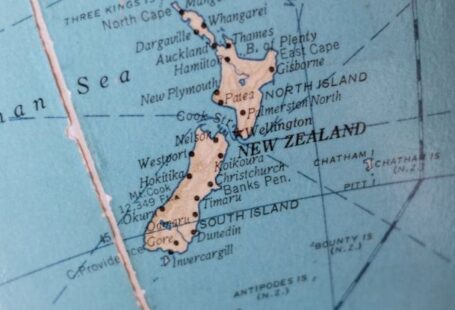Venturing into the great outdoors and embarking on a hiking adventure can be an exhilarating experience for many outdoor enthusiasts. The fresh air, stunning views, and sense of accomplishment that come with conquering a challenging trail are unmatched. However, as with any outdoor activity, hiking comes with its own set of risks. From unpredictable weather conditions to difficult terrain, hikers must always be prepared for the unexpected. In recent years, the use of topographical guides has gained traction as a tool to improve hiking safety. But can these guides truly make a difference in ensuring hikers’ well-being on the trails?
**Navigating with Precision**
One of the key benefits of using topographical guides while hiking is the ability to navigate with precision. These guides provide detailed information about the elevation, terrain, and landmarks along a trail, allowing hikers to better plan their route and anticipate any challenges they may encounter. By studying a topographical map before setting out on a hike, hikers can familiarize themselves with the layout of the area and identify potential hazards. This level of preparedness can help prevent getting lost or stranded in unfamiliar terrain, ultimately enhancing overall safety on the trail.
**Understanding Terrain Features**
Topographical guides offer valuable insights into the terrain features of a hiking area, enabling hikers to make informed decisions about their route. By examining contour lines, elevation profiles, and slope gradients, hikers can assess the difficulty level of a trail and determine whether it aligns with their skill level and physical capabilities. For example, a hiker with limited experience may opt for a gentler, more accessible trail, while seasoned hikers may seek out more challenging routes. By understanding the terrain features in advance, hikers can avoid potentially dangerous situations and ensure a more enjoyable hiking experience.
**Mitigating Risks**
Hiking in rugged, remote environments poses inherent risks, ranging from inclement weather to wildlife encounters. Topographical guides can play a crucial role in mitigating these risks by providing hikers with essential information to stay safe on the trail. For instance, a topographical map may indicate areas prone to flash floods or avalanches, allowing hikers to steer clear of danger zones. Likewise, knowing the location of water sources, campsites, and emergency shelters can be invaluable in case of unforeseen circumstances. By utilizing topographical guides to assess potential risks and plan accordingly, hikers can minimize the likelihood of accidents and emergencies while hiking.
**Enhancing Preparedness**
Preparation is key when it comes to hiking safely in the wilderness, and topographical guides are a valuable tool in enhancing hikers’ preparedness. By studying a map before heading out on a hike, hikers can familiarize themselves with the terrain, plan their route, and pack essential supplies accordingly. Additionally, topographical guides can help hikers estimate the duration of their hike and ensure they have enough food, water, and gear for the journey. Being well-prepared not only enhances safety on the trail but also contributes to a more enjoyable and stress-free hiking experience.
**Promoting Environmental Awareness**
In addition to improving safety, topographical guides also play a role in promoting environmental awareness among hikers. By highlighting important landmarks, conservation areas, and designated trails, these guides encourage hikers to respect and protect the natural environment they are exploring. Hikers who use topographical guides are more likely to stay on designated trails, follow Leave No Trace principles, and minimize their impact on fragile ecosystems. By fostering a deeper connection to the wilderness and instilling a sense of environmental stewardship, topographical guides contribute to the preservation of natural landscapes for future generations to enjoy.
**Safety First: Harnessing the Power of Topographical Guides**
As outdoor enthusiasts continue to seek out new adventures in the wilderness, prioritizing safety is paramount. Topographical guides offer a wealth of information and insights that can significantly enhance hiking safety by enabling hikers to navigate with precision, understand terrain features, mitigate risks, enhance preparedness, and promote environmental awareness. By harnessing the power of topographical guides, hikers can embark on their outdoor excursions with confidence, knowing they have the tools and knowledge to enjoy a safe and rewarding hiking experience.





